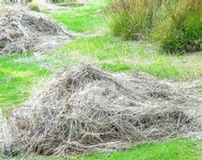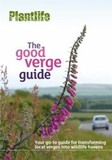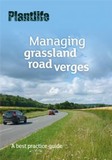

Biodiversity
Action
Plan

Short grass verges. It may be essential to have short grass verges or strips at the front-edge of the verge. Regular mowing to keep the grass short does not necessarily banish wildlife and plants of interest completely. However the use of fertilisers, pesticides and herbicides should be reduced to a minimum or stopped.
To keep flowering plants in short grass, cutting (to 8cm) can take place to April; then avoid cutting until after flowering and seeds have set; then cut to 8-10cm.
Mowing once every four weeks to ~3 to 5cm will allow plants to continue growing in short grass, if suppressed, and to flower between cuts
Longer Grass. Longer undisturbed grass in verges enables wildlife to shelter and overwinter; it has seeds and invertebrates which support birds and mammals. Leaving verges uncut or leaving up to 20% uncut at the back of the verge to allow an area of taller vegetation to persist, benefits wildlife. Such verges may be mown in rotation every three years or so, to avoid scrub and nettle encroachment,
However with more management there will be more flowering plants and pollinating insects.
Delaying cutting to late summer or early autumn. To conserve and enhance wild flowers and pollinating insects it is best to delay the main cut of the verge until the late summer, between mid-July and the end of September. Before mid-July will tend to eliminate late flowering plants; a later cut allows more plant species to shed their seed and helps invertebrates. If resources only allow one cut a year then this should be it.
Having the main cut in the late summer and another one or two cuts later in the year removes surplus growth and reduces the vigour of grasses and rampant plants to allow flowering plants better to persist.
If the grass growth is very lush and another cut is needed, it’s best to cut before March and only to a height of 7.5cm. This is before most plants flower and won’t disturb nesting birds. Then delay the main cut to September or October to allow plants cut earlier in the year sufficient time to flower and set seed.
In general
- Avoid the use of fertilisers, pesticides and herbicides.
- Have fewer cuts apart from specific verges or sight lines
To promote longer grass
- Keep encroaching nettles, docks, thistles… under control
- Leave some verges uncut in rotation (cut every 2-3 years) except where necessary for a strip next to the road
- Leave up to 20% uncut at the back of some verges.
To promote flowering plants within the grass verge
- Only cut once between mid-July and end of September, or
- Have main cut between mid-July and end of September
and cut(s) later in the year - Always collect and remove substantial mowings
- It may be necessary to reduce soil fertility by cutting a few times, removing mown grass each time
For flowers in shorter grass
- Mow if necessary until April and after flowering/seeding period. Maintain at ~8-10cm
- Some small suppressed plants even flower between cuts in short grass when mowed once every four weeks to ~3-5cm
Plantlife:
Buglife:

Collection of mowings. Any cut that produces substantial mowings should have them removed. This will reduce the build-up of organic material, keep nutrient levels low, and provide space for plants to regenerate from seed.
It is usually best to leave the mowings for a few days to allow seeds to drop to the ground and invertebrates to move on.
Much of this management advice for verges will also apply to other embankments and cuttings. The management practice adopted will depend on the individual situation of the verges and areas involved and the constraints upon them.


Specific verge management
Verges can be wildflower-rich and support biodiversity, although management is often determined by safety and legal requirements, resources and demands on time. Plantlife and Buglife have comprehensive advice on managing verges.
Verge Management